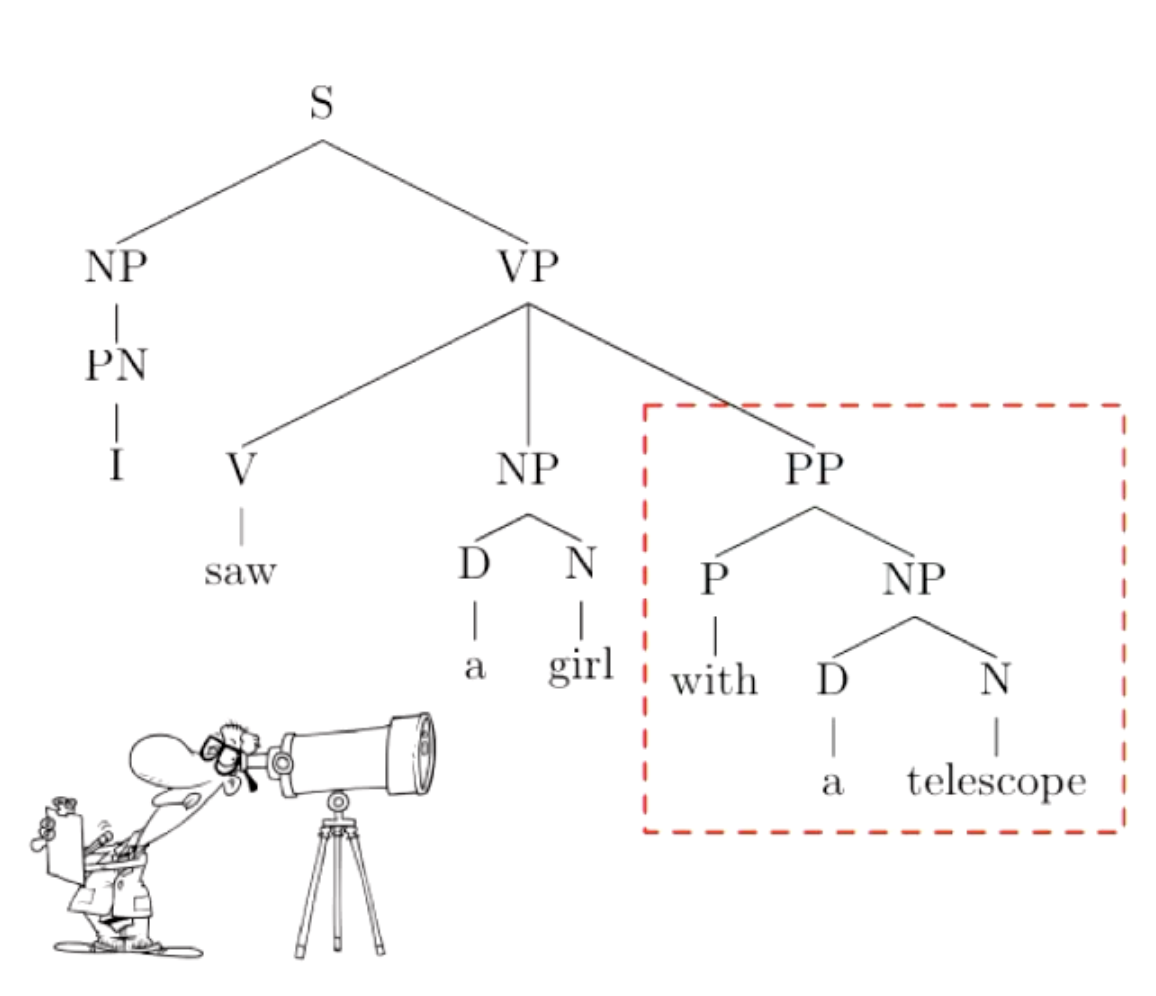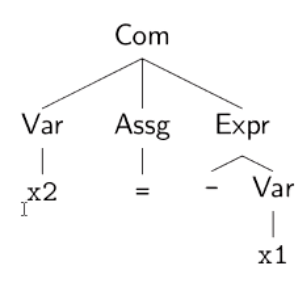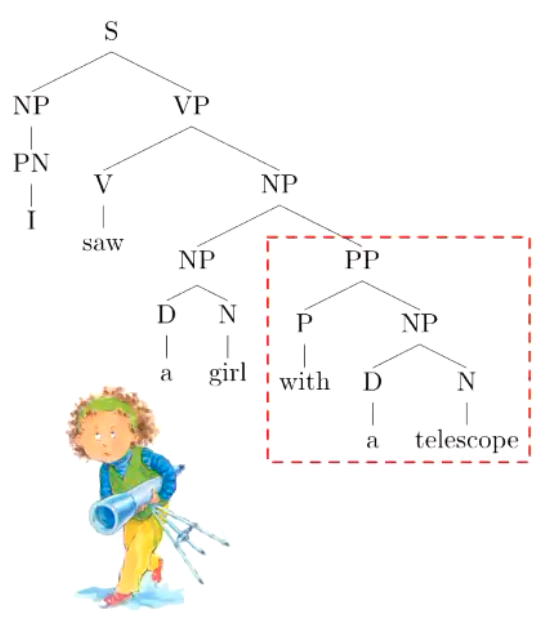Rules (Syntax) of Language (Generative Grammar):
By combining the words in specific ways, we can express meanings.
- A sentence () is made up of Noun Phrases () and Verb Phrases ().
- s are made up of a determinant ( or ) and noun (), where s are made up (at least) of Verbs () and s.
- Prepositional Phrases () are made up of Prepositions () and s
- These rules can scale up to googolplex amount of sentences. Occasionally, the words at the bottom (
x2and ) are both called terminals. The internal nodes are called Non-terminals. - The following is a Parse Tree or Syntax Tree or Constituent Tree

Note:
Can also work for programming languages, specifically, this refers to a Context-Free Language.

Ambiguity In Language:
“She ate the pizza on the floor”.
Was she on the floor, eating a pizza? Or was her pizza on the floor? Alternatively, the telescope example above could be written with a different tree, thus having a different meaning, but still be syntactically valid. In the below case, the girl has the telescope. In the above case, you were a weirdo:

- Lexical: Words have different meanings
- “I went to the bank”
- Syntactic: When the sentence can be parsed in multiple ways
- “I saw a girl with a telescope”
- Semantic / Structural: When a sentence can only be parsed in one way, but results in multiple potential meanings.
- “The chicken is ready to eat” - is it about to have its dinner or is it my dinner?
- Pragmatic: Arises when context infers meaning
- “Can you pass the salt”; it’s not likely a question of ability, but instead a command.
- Referential: When it’s unclear which entity a pronoun refers to
- “John told Alex he needed help.” - who needed the help?